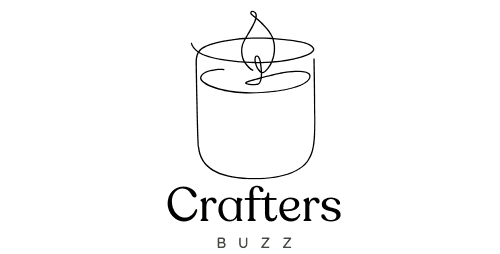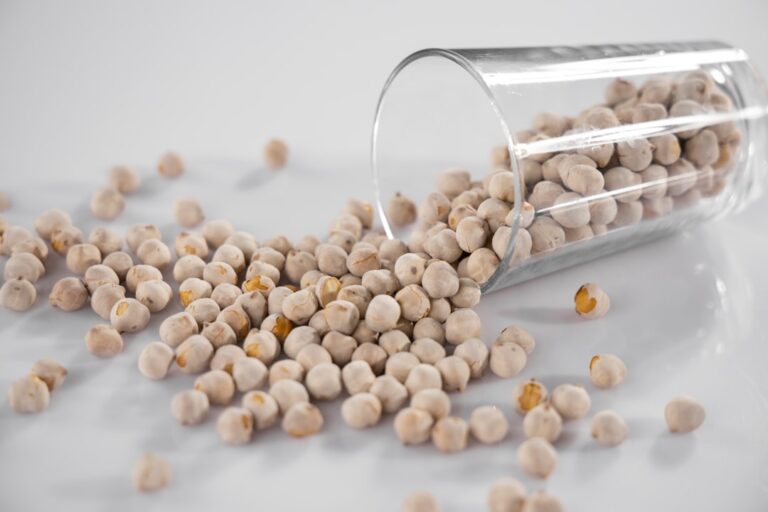Simple solutions for fixing tunneling in candles.
Tunneling in candles is a common phenomenon that occurs when the wax around the wick burns unevenly, creating a tunnel-like effect down the center of the candle. This issue can lead to wasted wax and a diminished fragrance throw, as the outer edges of the candle remain unburned. Tunneling typically arises from a variety of factors, including the initial burn time, wick size, and the type of wax used.
When a candle is lit for too short a duration, it may not reach the edges of the container, resulting in a hollowed-out center. This is particularly prevalent in candles with a high fragrance load, as the wax may melt more slowly than expected. To prevent tunneling, it is essential to understand the science behind how candles burn.
The wick draws melted wax up to the flame, where it vaporizes and combusts to produce light and scent. If the wax pool does not reach the edges of the container during the first burn, it can create a memory for the wax, leading to subsequent burns that continue to tunnel. Therefore, ensuring that the candle burns long enough to create a full melt pool is crucial.
A general rule of thumb is to allow the candle to burn for one hour for every inch in diameter. This practice helps to ensure an even burn and maximizes the candle’s lifespan.
Trimming the wick
Wick maintenance is a critical aspect of candle care that can significantly influence both performance and safety. Trimming the wick before each use is essential to achieving an even burn and preventing issues such as soot production and excessive flickering. A wick that is too long can lead to a larger flame, which may cause the candle to burn too quickly and create an uneven melt pool.
Ideally, wicks should be trimmed to about one-quarter inch before lighting. This length allows for optimal combustion while minimizing smoke and soot. In addition to promoting an even burn, trimming the wick also enhances the overall aesthetic experience of burning a candle.
A well-maintained wick produces a steady flame that contributes to a more pleasant ambiance. Furthermore, it helps to preserve the integrity of the fragrance by ensuring that the scent is released evenly throughout the burn. Regularly trimming the wick not only extends the life of the candle but also enhances safety by reducing the risk of flare-ups or excessive heat that could damage surfaces or pose fire hazards.
Using a candle warmer
Candle warmers have gained popularity as an alternative method for enjoying scented candles without the need for an open flame. These devices work by gently heating the candle from below, melting the wax and releasing its fragrance into the air without burning it. This method not only eliminates the risk of soot and smoke but also allows for a more controlled release of scent, making it an appealing option for those who are sensitive to strong fragrances or who want to prolong the life of their candles.
Using a candle warmer can also help prevent tunneling, as it encourages even melting of the wax without exposing it to direct flame. When using a warmer, it is important to choose one that is compatible with your specific type of candle, as some warmers are designed for jar candles while others work best with tea lights or votives. Additionally, monitoring the temperature is crucial; excessive heat can cause the wax to overheat and potentially alter its scent profile.
By incorporating a candle warmer into your routine, you can enjoy your favorite fragrances in a safer and more efficient manner.
Rotating the candle
Rotating your candle during use is another effective strategy for preventing tunneling and ensuring an even burn. By periodically turning the candle, you can help distribute heat more evenly across its surface, allowing for a more uniform melt pool. This practice is particularly beneficial for larger candles or those with multiple wicks, as it helps to mitigate any hot spots that may develop during burning.
When rotating a candle, it is advisable to do so gently and carefully, especially if it has been burning for an extended period. Sudden movements can cause hot wax to spill or create uneven melting patterns. Ideally, you should rotate the candle every 30 minutes or so, depending on its size and burn time.
This simple technique can significantly enhance your candle experience by maximizing fragrance throw and extending the life of your favorite products.
Using aluminum foil
Aluminum foil can be an unexpected yet effective tool in combating tunneling in candles. By wrapping a strip of aluminum foil around the top edge of a burning candle, you can create a makeshift reflector that helps to retain heat and promote even melting of the wax. The foil reflects heat back into the candle, allowing it to melt more uniformly and reducing the likelihood of tunneling.
To use aluminum foil effectively, cut a piece large enough to encircle the top of the candle while leaving an opening for the wick. This will help trap heat while still allowing for proper combustion. It’s important to monitor the candle closely while using this method, as excessive heat can lead to overheating or even damage to certain types of containers.
This technique is particularly useful for candles that are prone to tunneling or those that have been lit for shorter periods.
Choosing the right size wick
Understanding the Importance of Wick Size
The size of the wick plays a crucial role in how well a candle burns and how effectively it releases fragrance. A wick that is too small may struggle to produce enough heat to melt the wax evenly, leading to tunneling and poor scent throw. Conversely, a wick that is too large can create an overly intense flame that burns through wax too quickly and produces excessive soot.
Factors to Consider When Choosing a Wick
Selecting the appropriate wick size based on the diameter and type of candle is essential for optimal performance. When choosing a wick, consider factors such as wax type, fragrance load, and container size. For instance, natural waxes like soy or beeswax may require different wick sizes compared to paraffin-based candles due to their varying melting points and burn characteristics.
Guidelines for Wick Sizing
Additionally, many manufacturers provide guidelines on wick sizing based on their specific products, which can serve as a helpful reference when selecting wicks for DIY projects or when purchasing new candles.
Using a candle snuffer
A candle snuffer is an elegant tool designed specifically for extinguishing candles without creating smoke or soot. Unlike blowing out a candle, which can cause wax splatter and release soot into the air, using a snuffer allows for a cleaner extinguishing process. The gentle covering action of a snuffer deprives the flame of oxygen, leading to a more controlled extinguishing process that preserves both fragrance and appearance.
In addition to its aesthetic benefits, using a snuffer can also enhance safety by reducing the risk of flare-ups associated with blowing out candles. It minimizes smoke production and helps maintain air quality in your space. For those who enjoy burning multiple candles at once or have sensitive respiratory systems, incorporating a snuffer into your candle care routine can make for a more pleasant experience overall.
Proper storage and burning practices
Proper storage and burning practices are essential components of maintaining candle quality and performance over time. Candles should be stored in a cool, dry place away from direct sunlight or heat sources, as exposure to extreme temperatures can alter their composition and lead to issues such as fading colors or weakened fragrances. Additionally, keeping candles covered when not in use can help protect them from dust and debris that may affect their burn quality.
When it comes to burning candles, adhering to recommended burn times is crucial for achieving optimal results. As mentioned earlier, allowing candles to burn long enough to create a full melt pool during each use prevents tunneling and maximizes fragrance release. It’s also important to keep wicks trimmed and free from debris before lighting to ensure an even burn throughout each session.
By following these best practices for storage and burning, you can enjoy your candles safely while maximizing their lifespan and fragrance potential.
If you are interested in learning more about candles and their impact on the environment, you may want to check out this article on scented candles’ impact on mood and environment. Understanding the design of outdoor candles for open-air use can also be beneficial, as discussed in this article on candle wicks’ impact on burn time and quality.
FAQs
What is tunneling in candles?
Tunneling in candles refers to the uneven burning pattern where the wax only melts in the center, leaving a tunnel-like hole down the middle of the candle. This can result in wasted wax and a shorter burn time.
What causes tunneling in candles?
Tunneling in candles is typically caused by factors such as the size of the wick, the type of wax used, and the burning conditions. A wick that is too small, a high concentration of fragrance oils, or drafts can all contribute to tunneling.
How can tunneling in candles be fixed?
There are several simple solutions for fixing tunneling in candles, including trimming the wick before each use, allowing the candle to burn long enough to create a full melt pool, and avoiding burning the candle in drafty areas. Using a wick trimmer and choosing the right size wick for the candle can also help prevent tunneling.













